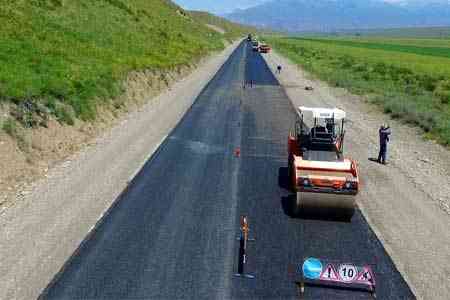


ArmInfo.. On April 15-17 this year, experts from Armenia, Iran, Georgia and Russia will discuss in Tehran technical solutions for the construction of the North-South energy corridor. Spokesperson of the Minister of Energy Infrastructures and Natural Resources of the Republic of Armenia, Rima Yeganyan confirmed this information to ArmInfo.
After this meeting, according to R. Yeganyan, a meeting of the coordination council will be held in the Iranian capital from April 29 to May 1, which will be held at the level of deputy ministers of four states.
The results of these discussions and the proposals received will be on the agenda of the high ministerial meeting to be held in Tehran on June 16-18. As expected, during these meetings, the Armenian side will present a number of issues related to technical decisions on the formation of a regional electricity market and electricity trading.
To note, the construction project of the North-South energy corridor, designed to unite the electric power systems of Iran, Armenia, Georgia and Russia, has faced a number of problems. The construction program of 400-kilovolt power transmission line (PTL) Iran-Armenia and Armenia-Georgia was to be implemented before the end of 2019. And if the construction of Iran-Armenia power PTL is only 20% complete, then the parties have not yet begun construction of a similar power transmission lines with Georgia. On March 15 last year, the technical commission on improving the reliability and efficiency of the electric power system of Armenia approved the technical task for the construction of PTL Armenia-Georgia. The terms of reference was developed by the German KfW bank, which finances the program, and FICHTNER, which won the tender to identify a project consultant.
According to the technical task, the project is divided into several stages. At the first stage, it was planned to modernize an electric substation with a voltage of 220 kV, to build a new substation with a voltage of 400 kV, and also to build a new overhead power line to the Georgian border. At the second stage it was planned to build an electrical substation with a voltage of 500 kV.
However, in order to improve the efficiency of the program, it is now planned to use the existing electrical substations, the modernization of which is less expensive than building new ones. At the same time, already on the available space, on which it was planned to build an electrical substation, solar power stations will be erected, the construction costs of which will be reduced through the use of existing infrastructures. As a result, the cost of the entire construction program of the Armenia-Georgia PTL will be reduced by 30%. Moreover, the construction of a solar power station will save at least another 20% of the funds. At the meeting of the commission it was noted that the first phase of the project should be completed no later than the third Iran-Armenia PTL currently under construction. In general, the Iran-Armenia PTL construction program should be completed in parallel with the second power unit of the Yerevan TPP under construction. As ArmInfo previously reported, the sources of funding for the first two stages are already known. According to the FICHTNER company, the preliminary cost of the construction program for the PTLs of Armenia-Georgia will be EUR 326.9 million, 10% of which should be part of the contribution of Georgia. The first two phases of the program are estimated at 188.2 million euros. To this end, in 2014-2015, three loan agreements were signed. In particular, the German bank KfW allocated as a loan in the form of a loan of 168 million euros, and the European Investment Bank will provide another 10 million euros. It is expected to receive another 10 million euros in the form of a grant from the European Commission. As for the Iran-Armenia high-voltage PTL, the project is funded by the Iranian side, the total cost of the program is $ 107 million. However, given the new sanctions imposed by the United States against Iran, there is a concern about a reduction in the volume of this investment program.